Our work has pioneered developments in the field of low coordinate phosphorus chemistry, demonstrating the exceptional ability of phosphorus to mimic the chemistry of unsaturated carbon.
We are interested in the synthesis and chemistry of phosphorus-containing analogues of well-known, unsaturateed hydrocarbons such as arenes, cyclobutadienes and the cyclopentadienyl anion. These molecules serve as versatile ligands toward transition metals, lanthanides, actinides and main group elements, ligating though their pi-systems and/or accessible phosphorus lone electron pairs. Thus, we have been interested int he chemistry of poly-phosphaferrocenes, and the investigation of their coordination chemistry, with a view to exploiting them in catalyst development. We have also recently demonstrated the capacity of triphosphabenzene to bind as an η6-ligand, and further coordinate through the, otherwise inert, lone pairs.
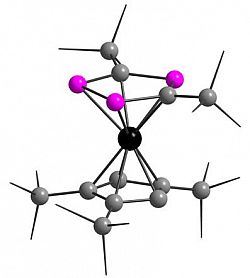 |
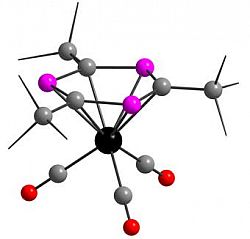 |
Many of these novel heterocyclic ligands and their complexes serves as unlikely precursors to a wide range of remarkable phosphorus-contining cage compounds. Thus, we have established facile access to the "JAWS" cage, the P−P bond of which 'bites' a range of metals and electrophilic fragments. and can also be oxidatively cleaged by dihalogens, offering access to a range of eaisly derivatsed, sterically encumbering ligands.
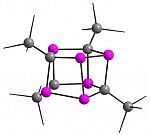 |
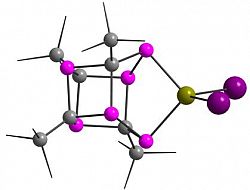 |
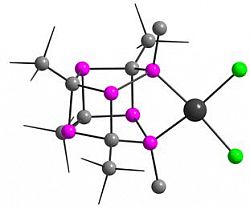 |
The starting point for much of this chemistry is the stable phospha-alkyne tBuC≡P, which undergoes a wide-range of metal-mediate reactions and oligomerisations to afford novel, phosphorus-containing, ring and cage compounds. Additionally, in collaboration with Prof. Geoff Cloke, we have utilised tBuC≡P in metal-vapour synthesis to prepare a range of unprecedented sandwich complexes of the di- and tri-phospholide anions P2C3tBu3 and P3C2tBu2, including a triple-decker scandium complex.
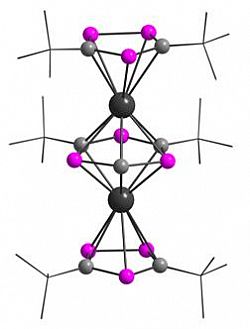 |
The wider potential of these unsaturated phosphorus compounds continues to be recognised world-wide. For instance, work by Prof. Derek Gates at UBC Canada has shown the accessibility of a wide range of polymers of phosphaalkenes R2C=PR, mimicking the well-known polymerisation of ethylenes. While polyphospha-alkynes currently remain unknown, their pursuit is of current interest, while their likely 2-dimensional structures have recently been computed by Tamas Vespremi of Budapest.


